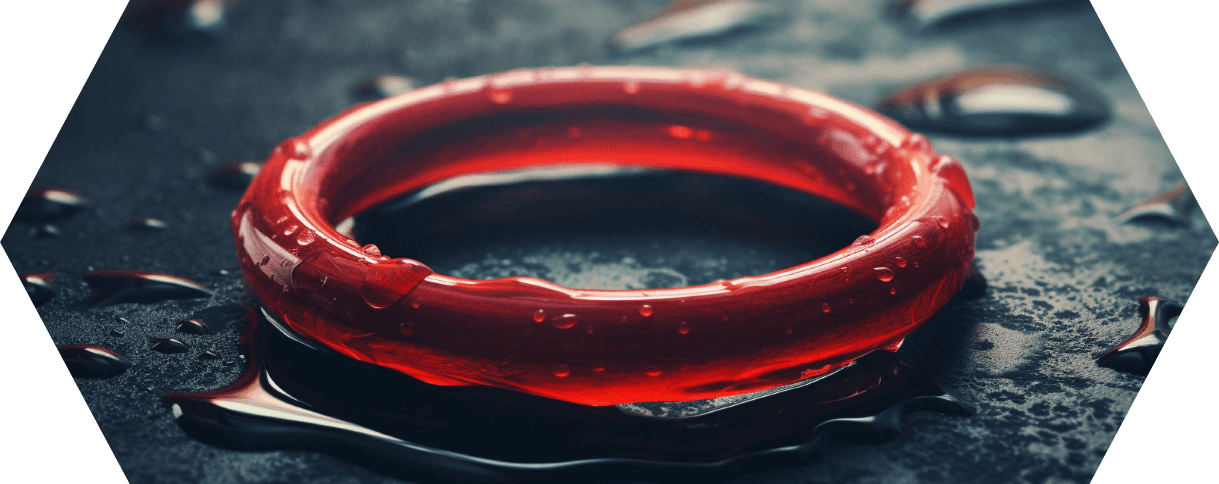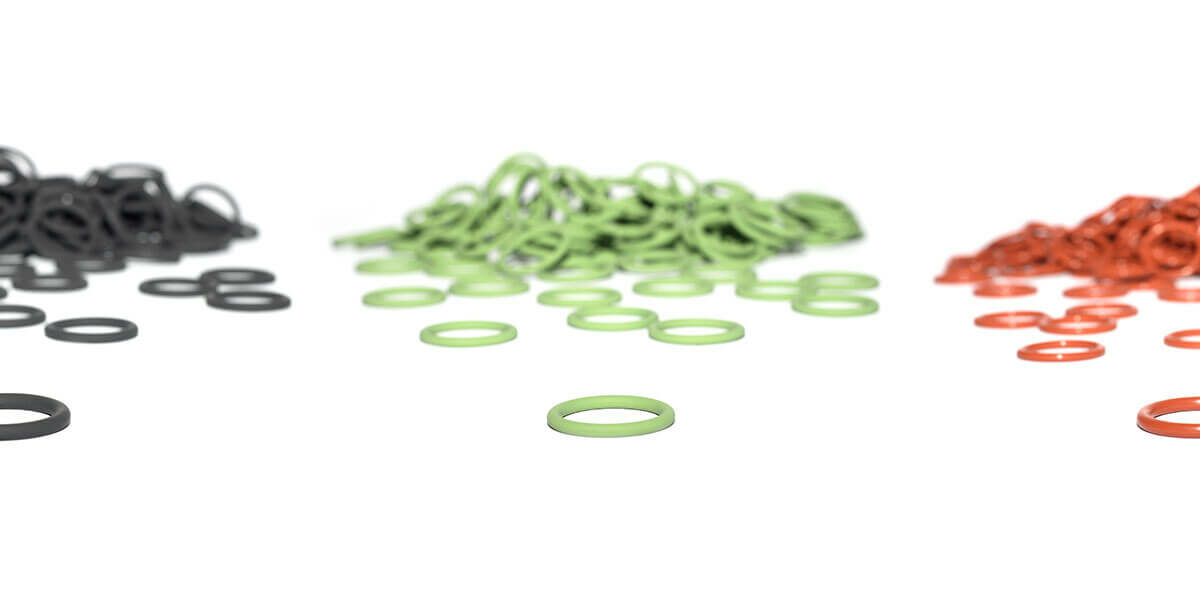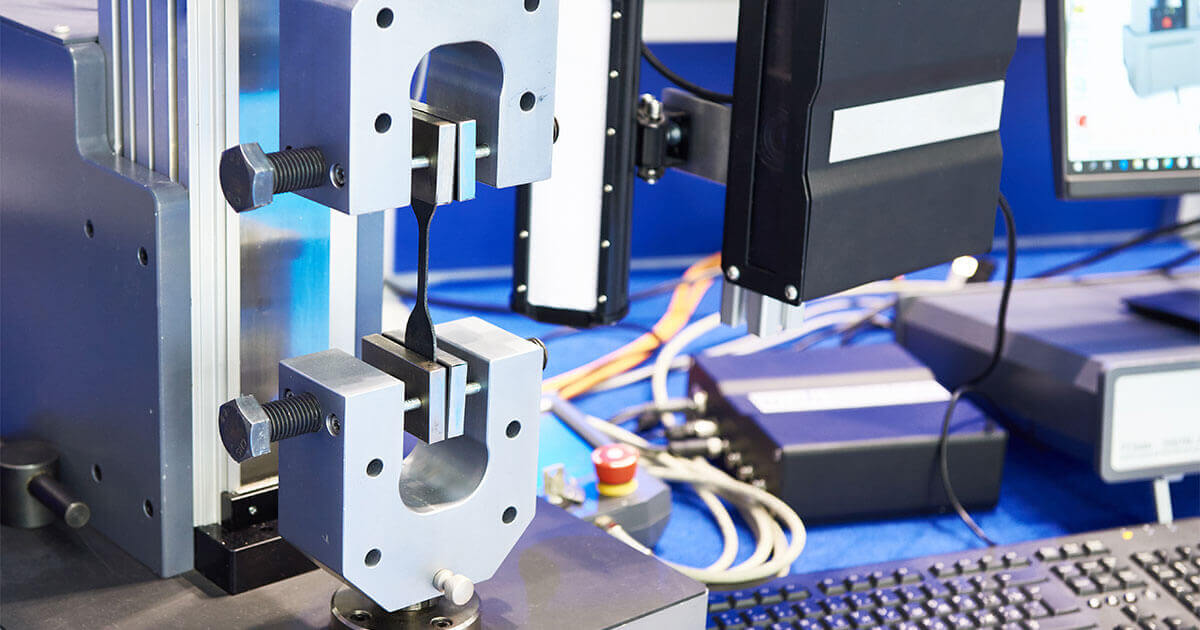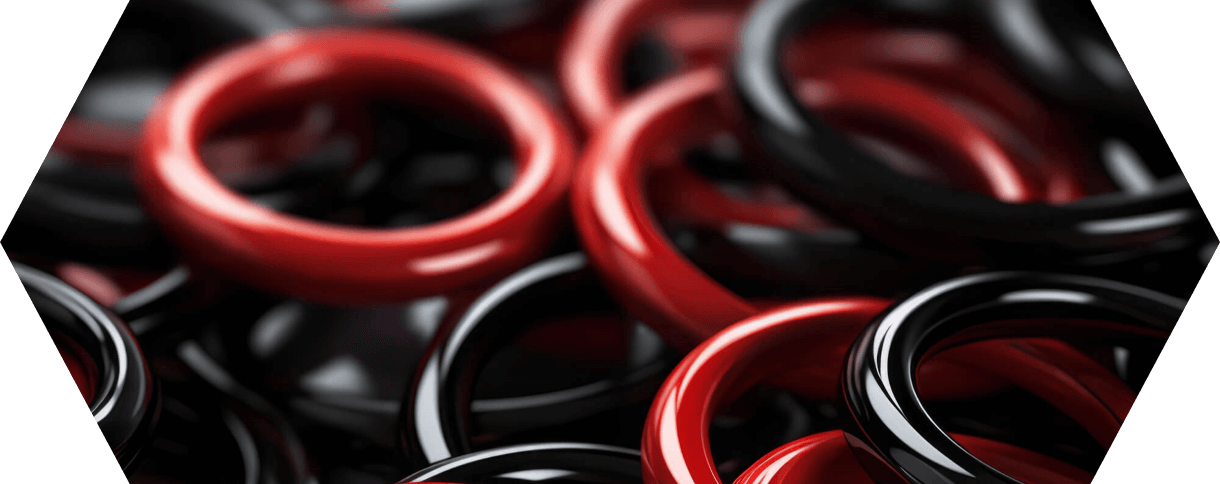
10 questions: O-ring data sheets
In this short article, we answer the 10 most important questions about the correct design of O-ring data sheets in a simple and understandable way.

O-rings are inconspicuous components at first glance, but hardly any technical device would function without them. They are used to prevent the penetration of a medium from one room into another. Think of a pipe connection where the O-ring keeps the process medium inside or prevents the ambient medium from penetrating, depending on the pressure ratio.
Today, highly efficient processes and the highly specialized plant technology required for them place high functional demands on seals. In many areas, the use of widespread standard seals has therefore increasingly given way to individual solutions.
This creates a complex field of activity for everyone involved in the design, manufacture, use and maintenance of sealing solutions. In this article, we provide an overview of the most important aspects of the professional use of O-rings.

Technical performance, reliability and costs are the overriding criteria by which not only O-rings, but all means of production must be measured.
However, the situation is rarely the same as with O-rings: There is a clear disparity between procurement costs and the influence on the other performance parameters of devices, machines and systems.
Even if an O-ring does not have a safety-critical function, unlike in many areas of the pharmaceutical, chemical or food industry, it can become a problem. Incalculable sporadic machine failures not only cause downtime, but also considerable maintenance costs.
It is up to the technicians to find the right balance between the requirements and acquisition costs of the O-rings for each individual case. This quickly becomes complicated, as there are various questions to be answered on the way to the optimum sealing solution.
This begins with the selection of materials, taking into account the necessary approvals, and continues with the selection of suppliers, the design of the sealing point and careful and reliable assembly. This is sometimes an iterative process, which also includes damage analysis of defective O-rings.
If you have committed partners, you will reach your goal faster. What counts here is reliability, flexibility and a willingness to share technical expertise.
O-rings are the most commonly used sealing elements and are distinguished from the equally common flat seals by their shape.
They consist of a closed ring with a circular cross-section and are used to seal stationary and moving machine parts. The sealing effect is created by the compression of the elastic material between the two sealing surfaces.
Flat gaskets used to seal flanges, which lack the round cross-section, also function in this way. The load direction is different for dynamic sealing.
For example, the technician uses the O-ring to seal a hydraulic cylinder in the form of a piston or rod seal. The difference between the installation types: With the piston seal, the installation groove is located in the inner part, with the rod seal in the outer part.
O-rings are usually made of elastomers, all of which are characterized by their rubber-elastic properties. Common base polymers are NBR (acrylonitrile butadiene rubber), FKM (fluororubber), FFKM (perfluororubber) and EPDM (ethylene propylene diene rubber), which differ in many technical properties. The compound manufacturer fine-tunes the material by adding numerous additives according to a recipe.
Primary forming manufacturing processes are used for the series production of O-rings in standard dimensions. Compression moulding and injection moulding are widely used, with vulcanization being of particular importance. In this stage, the macromolecules form cross-links under the effect of pressure and heat, which give the elastomer its elastic properties.
In contrast, separating processes dominate in the manufacture of flat gaskets. Here, a tool carves out the contour of the seal from a finished panel material.
When designing a seal using an O-ring, the technician must combine many requirements. The challenge here is that many of the design objectives of a waterproofing system are in conflict with each other.
On the one hand, it is desirable for the O-ring to have a low hardness, as this enables it to contain and compensate for the finest unevenness of the sealing surfaces. This allows the O-ring to seal securely without the need for top-quality surfaces.
On the other hand, a soft O-ring is prone to gap extrusion. Pressure can therefore press it into the sealing gap and cause permanent damage.
Tensile strength and elongation at break are also important parameters: They provide information on the force required to tear the O-ring and how great its elongation is at the moment of tearing.
Depending on this, certain limit values must not be exceeded during installation in order to prevent preliminary damage to the sealing element. This is particularly important in practice, as studies show that assembly-related damage is one of the most common causes of O-ring failure.

The operating temperature is also decisive for the selection of the right O-ring. This is because the properties of a sealing material sometimes vary significantly with the temperatures involved.
It is a question of what temperature load is to be expected under operating conditions and whether these are temporary temperature peaks or permanent conditions.
Elastomeric materials lose their elasticity at certain temperatures and become permanently deformed. Then they do not fully return to their original shape after the pressure has been released.
In practice: The sealing effect of the O-ring is created by the compression of its cross-section. If a permanent deformation occurs on the O-ring, this compression will diminish. The compression set provides information about the deformation behavior of gasket materials at certain temperatures.

However, the values determined for the compression set also depend on the ambient media. The measured value of a material can therefore be very different, depending on whether the test is carried out in oil, steam or another medium.
The ambient media can change the properties of the seal, for example through swelling or shrinkage. Components of the surrounding medium penetrate the seal or detach components from it.
The basic resistance properties are already determined by the base polymer of the O-ring material. The other ingredients in the mixture can improve these and other properties to a certain extent.
The manufacturer’s resistance list indicates how suitable a gasket material is for use in various media. The seal can come into contact with potentially harmful media even before the operating phase.
For example, the use of unsuitable assembly oils or greases is a common cause of damage. Errors can even occur during storage. Rubber products should therefore always be stored in accordance with standard 7716.
There are mandatory material requirements for O-rings in many areas of application, not so much from the perspective of the durability of the seal, but for reasons of consumer safety. The manufacturer usually confirms the conformity of the seals with these requirements.
In other cases, recognized testing institutes issue corresponding approvals.
An application example: In food processing plants, seals often come into contact with greasy or aqueous substances. These can release substances from the gasket material, which ultimately enter the consumer’s body and can have harmful consequences.
Corresponding food approvals for gaskets specify limit values for the maximum permissible extraction of gasket components. Approvals for O-rings for use in oxygen or gas systems also serve to directly prevent accidents
In addition to assembly, errors in the design of the installation space for O-rings are a major source of errors. During the design phase, the engineer pays particular attention to avoiding sharp edges and excessive compression. The former prevents mechanical damage to the O-ring, while compression in the target area maintains the elasticity of the O-ring.
Accordingly, the compression set is particularly low here. Many premature seal failures can be prevented by acting in this way, provided that the manufacturing technology meets the requirements.
It is important to comply with tolerances and to provide components with residue-free surfaces with low surface roughness.
If all the important requirements can be taken into account during the design phase, then all the advantages of a correctly used O-ring come into play: low space requirement, simple installation, high sealing effect with low deformation forces and low costs.
Given the complexity of the subject of poetry, it is helpful to have a competent partner at your side in your day-to-day work.
We see ourselves not only as a supplier, but also as a service provider and consultant in the sealing sector. In addition to our products, our customers also benefit from our many years of experience in the field of rubber and plastics. Our experts will be happy to answer any questions you may have about sealing.
“I am convinced that we should share our knowledge with the world. I hope I have been able to answer all your questions. If you have any further questions, please feel free to contact us at any time. We will be happy to help you.”

Lord of the O-rings
Author of the sealing academy

In this short article, we answer the 10 most important questions about the correct design of O-ring data sheets in a simple and understandable way.

In this short article, we answer the 10 most important questions about the correct design of O-ring grooves in a simple and understandable way.

In this short article, we answer the 10 most important questions about the correct storage of O-rings in a simple and understandable way.
You need to load content from reCAPTCHA to submit the form. Please note that doing so will share data with third-party providers.
More Information